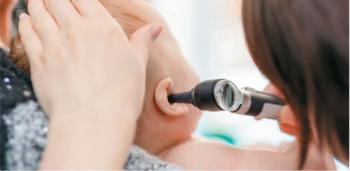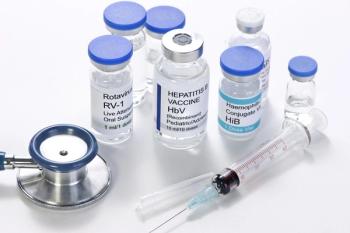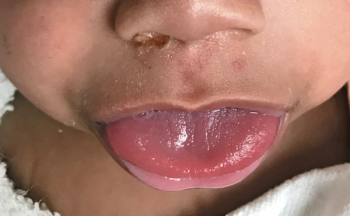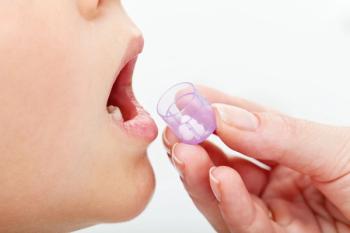
Pediatricians need to recognize symptoms of perinatal depression in new mothers, provide basic counseling and treatment, and refer for appropriate services when needed.

Pediatricians need to recognize symptoms of perinatal depression in new mothers, provide basic counseling and treatment, and refer for appropriate services when needed.

A landmark observational study is the first to report on the effect of ultraviolet-free blue light therapy on allergic skin disease in newborns.

In my 40-plus years of pediatrics, I have sometimes treated patients based on the best of intentions, but with perhaps the worst of evidence. Here are some “best practices” I have used, and discarded, over time.

New research examined the potential role of Gram-negative skin bacteria in the pathogenesis and exacerbation of eczema, and their effectiveness to treat it.

Children with psoriasis may have higher rates of associated medical comorbidities. Newest recommendations say such kids should be screened for these risk factors.


Treatment of obstructive sleep apnea/nocturnal hypoxia with continuous positive airway pressure (CPAP) in children with nonalcoholic fatty liver disease (NAFLD) reduces the severity of liver injury and of oxidative stress.

The primary care physician needs to have in place appropriate strategies for evaluation of urologic issues and recommendations to parents who broach these topics.

Tailoring drug delivery modalities to the individual patient based on age, ability level, and preference can optimize control of pediatric asthma.

When teenaged athletes complain of lumbar back pain that worsens with activity, there should be a high index of suspicion for a spondylolysis.

Pediatricians are quite capable of caring for both the physical and mental health of patients. Here is how embedding mental health services into your practice and collaborating with community mental health professionals can accomplish both.

Indeed it does, according to a randomized trial conducted during a 3-year period in England and Wales in more than 1300 exclusively breastfed infants.

The mother of a healthy 4-week-old boy brings him to the office for evaluation of a small pit on the medial canthus of the left eye, noted since birth. There is constant drainage of tears onto the left side of his face and exudate on the bottom of the left medial canthus.

Kids deserve the best care when they are ill or injured, and the best care should come from seeing the pediatrician in the medical home.

For Contemporary Pediatrics, Dr Bobby Lazzara discusses a study published in Neonatology, which studied 100,000 children via an insurance database to examine the impact of phototherapy on preventing atopic dermatitis.

For children living below the federal poverty level, public insurance programs are a lifeline to crucial healthcare services. If eligibility requirements change, however, thousands of children could be left without healthcare-a move that could result in billions of dollars’ worth of uncompensated care for hospitals each year.

Drs. Bass and Valasek’s article in the August 2018 issue of Contemporary Pediatrics titled “Sports-related concussion: When it’s OK to return to play” provides a comprehensive review of sports-related concussions (SRC).

A new study reveals that while more teenagers are becoming overweight or obese, fewer are trying to lose weight, although it’s not entirely true which of these trends is more causative.

A new study that asked parents to guess the sugar content in the foods they feed their children showed that families are grossly underestimating how much sweeter foods are than they think.

While the ACIP continues to recommend the intranasal flu vaccine for the coming year, AAP is being more cautious in its recommendation due to limited data on last year’s performance.

The number of kindergartners starting school without protection against vaccine-preventable diseases is increasing in states that allow nonmedical exemptions to recommended immunizations.

New data from the Centers for Disease Control and Prevention reveal that 1 in 7 teenagers is abusing opioids, and sexual minorities face growing health disparities and health risks.

The early years in an infant’s life set the stage for building one’s ability to learn. Pediatricians play a pivotal role in providing early intervention for any factors that might affect a child’s school readiness and future life course.

Pediatricians need to understand both pathophysiology and management of concussion to correctly address the question of return-to-play for athletes after a jolt to the head.

Infants born to mothers who receive vitamin D supplementation while pregnant are at reduced risk of being small for gestational age and experience improved growth during infancy, with no increased risk of fetal or neonatal mortality and congenital malformation. These were major findings of a systematic review and meta-analysis of 24 randomized controlled trials involving 5405 participants.

A 33-year-old female, G3P1011, was transferred from an outside facility at 33 weeks and 6 days gestation for anticipated preterm delivery secondary to preeclampsia. On prenatal ultrasound, her fetus was diagnosed with an omphalocele and delivery was preferred at an institution with a neonatal intensive care unit to manage the infant.

Most parents of young children who are overweight or obese think their child’s weight is “just right,” according to a study conducted in Sweden. However, as their child grows older, more parents recognize when their child is too heavy-especially if he or she has reached the level of obesity.

Physicians, parents/caregivers, and school personnel must ensure that children are not harmed by medication errors in the provider’s office, at home, or at school.

Compared with their peers who spend no more than 2 hours each weekday exposed to digital media, school-aged children who are in front of screens for longer are less likely to be doing well overall, according to their parents. Furthermore, how much digital media exposure (DME) a child gets is inversely related, in a dose-dependent manner, to markers of childhood “flourishing.”